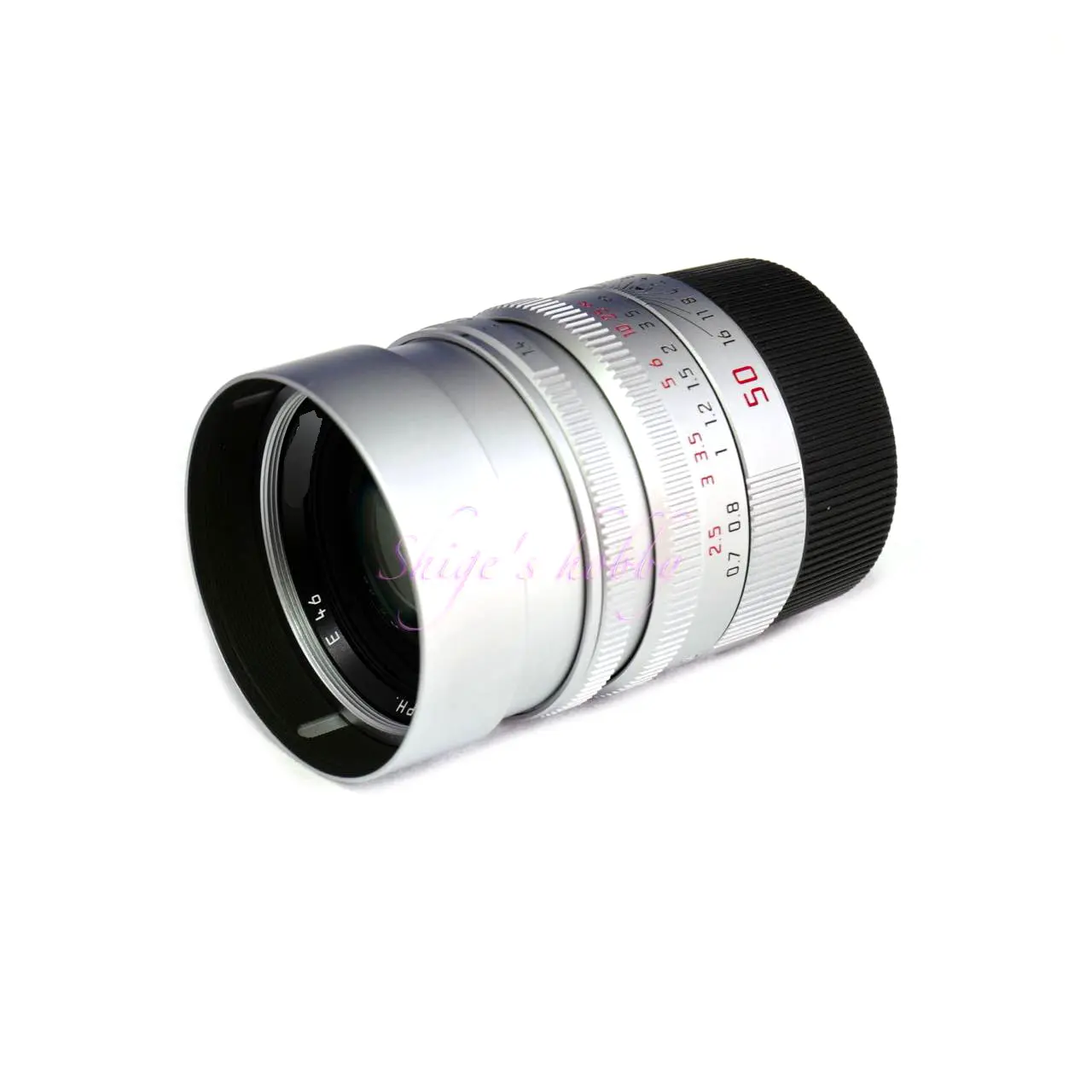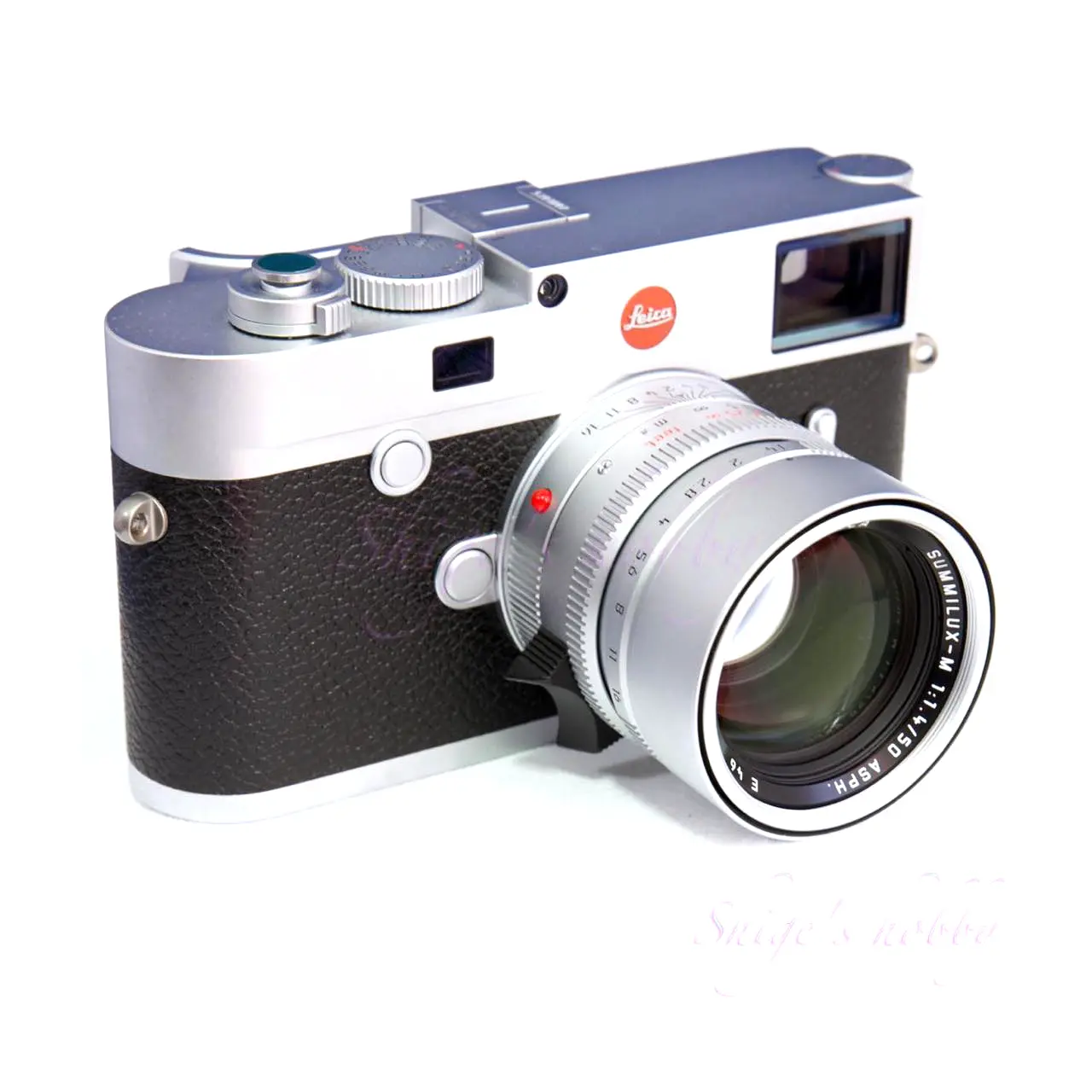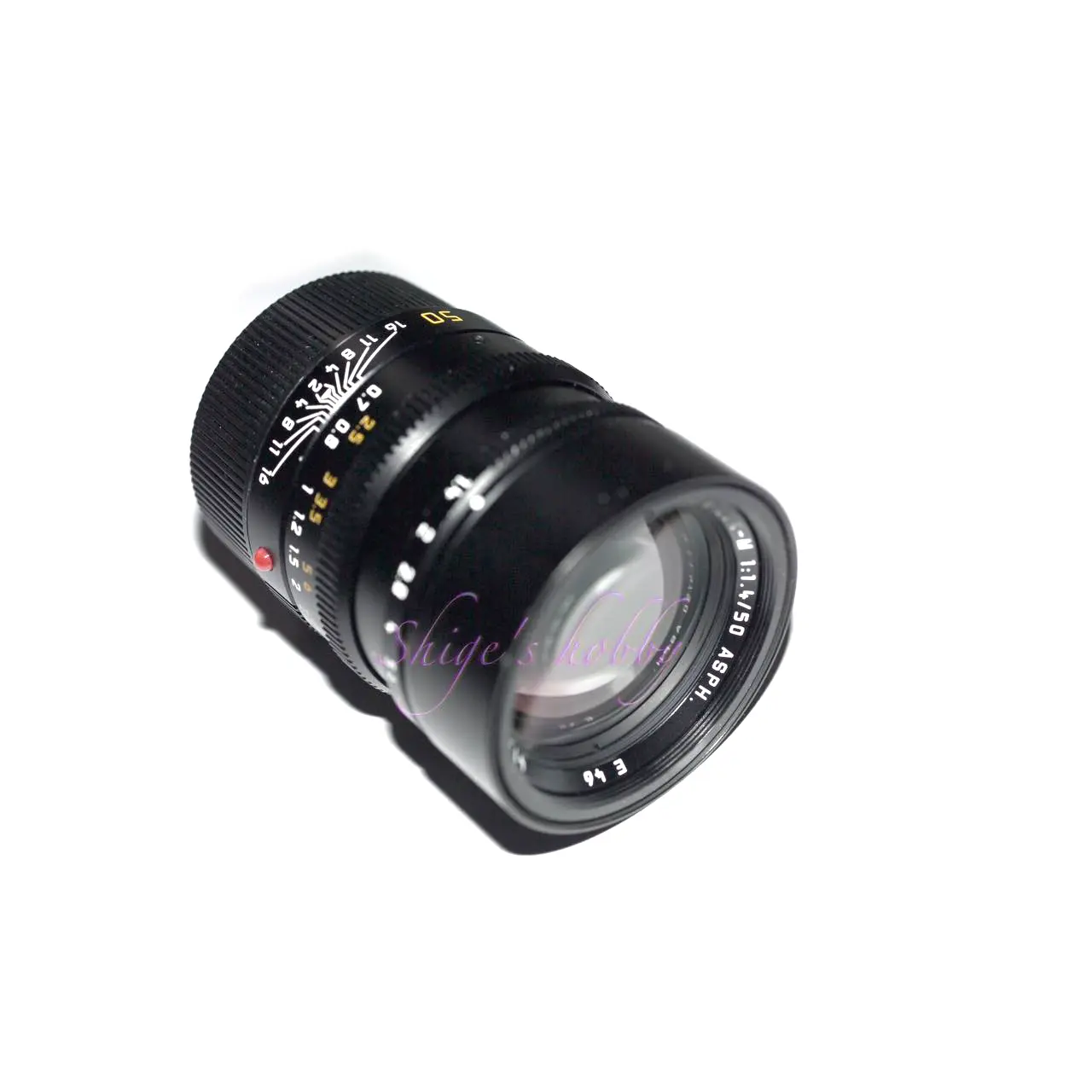A review and sample photos of the Leica Summilux M 50mm ASPH. lens used with both film and digital rangefinder cameras.
- Please see the disclaimer regarding advertising here.
- Italicized links in the text are advertisement links that take you to other sites.
Table of contents

Gallery
The following cameras were used to take the sample photos.
- LEICA M6 +FUJIFILM Velvia100F+NIKON COOLSCAN-V
- LEICA M10
- LEICA M9
- Clicking on the image will enlarge it.
Review




1.Overview
The SUMMILUX M 50mm F1.4 ASPH. (order number: 11891-black, silver-11892) is a standard lens that uses aspherical lenses and was released in 2006.
In addition to the model with an integrated hood shown in the photo, a lens with a lens barrel that imitates the first Summilux is also available as a limited edition model (order number: 11628).
The black and silver versions have different lens barrel materials, with the silver version made of brass and weighing 460g, and the black version made of aluminum and weighing 335g, a difference of about 100g.
In the 2023 renewal (order number: 11728-black, silver-11729), the minimum shooting distance was shortened to 0.45m, the number of aperture blades was increased to 11, and the aperture shape was made closer to a perfect circle, among other minor changes to the specifications. However, the sales price has increased further with the renewal. Also, the only difference between the silver and black versions is the paint, and the weight is the same.
2.Usability
The SUMMILUX M 50mm F1.4 ASPH. delivers satisfying results whether used with film or digital cameras.
The version I’m discussing here is the early aspherical type with nine aperture blades.
The focus ring feels very smooth on both the black and silver versions; when I first used it, it felt almost too light. Because of this, I sometimes struggled with fine-tuning the focus. However, after using it for a while, I was able to operate the focus quickly, and I came to prefer it to a heavier helicoid.
When shooting wide open, the image shows a sharp in-focus area that smoothly transitions into a pleasing bokeh, making me feel like I’ve become a better photographer. Stopping down the aperture results in a more uniform image, which reduces the overall interest, so I try to actively use the lens wide open to avoid monotony. However, shooting wide open sometimes resulted in disappointing results, such as distracting bokeh in the background at close distances, and rugby-ball-shaped bokeh due to vignetting at wide apertures.
I also owned a LEICA SL Typ601 mirrorless camera at the same time, but I didn’t use this lens with it. While an electronic viewfinder allows for more precise focus adjustment, I didn’t feel the need for it with this lens. The imbalance between the camera and lens when mounted on the SL Typ601 was also one of the reasons I didn’t use it with that camera.
■Film rangefinder camera
When I was using this lens, I was using a Leica M6 (0.72x viewfinder) and a Leica M6TTL (0.85x viewfinder). Focusing was possible without any problems at the widest aperture with either viewfinder, but since film Leica M cameras have a maximum shutter speed of 1/1000, I often used a smaller aperture during the daytime.
It also paired well with Fujifilm’s high-saturation reversal film Velvia 100F, producing vibrant colors and detailed rendering that matched the film’s fine grain.
The first example photo of Mount Fuji captures the atmosphere of the sky and mountains very well.
■Digital rangefinder camera
The Leica M10 is a 24-megapixel and the Leica M9 is an 18-megapixel digital rangefinder camera, roughly placing them in the 20-megapixel class of digital cameras. 20 megapixels is sufficient resolution for most purposes, and the SUMMILUX M 50mm lens, which uses aspherical elements, is more than capable of meeting that resolution.
The lens produces images with a good balance of sharpness and bokeh, but some images have an unattractive, rugby ball-shaped bokeh in the background, making it a lens that requires careful consideration of the shooting situation. The early version of the aspherical lens, with its 9-blade aperture, produces an aperture shape with noticeable edges when stopped down, which is also a matter of personal preference.
3.Summary
In conclusion, to summarize the SUMMILUX M 50mm F1.4 ASPH., it can be used reliably even at its widest aperture, is almost the same size as the SUMMICRON 50mm but produces a larger bokeh effect, and is more compact than the NOCTILUX 50mm with less image degradation, making it very easy to use as an everyday standard lens.
The handling of the aspherical lens is also well-executed, with the focus point being precise in most situations and the bokeh in front and behind the focus point being stable. However, it is difficult to use in situations where the rugby ball-shaped bokeh is noticeable, so the photographer needs to be careful and adjust the aperture accordingly.
Specifications, considerations, etc.
The Summilux M 50mm is like the second son in Leica’s standard lens lineup; it’s darker than the Noctilux (the eldest son) but lighter in weight, and brighter than the Summicron (the youngest son) while having a similar weight.
As mentioned in the overview, the difference between the black and silver versions is that the silver version is heavier and the black version is lighter.
Based on my experience using both the brass silver and aluminum black versions, the silver version feels more substantial, but when considering portability, the lighter black version was more convenient.
There’s also a theory that heavier lenses are better for preventing camera shake, so the choice between silver and black should be based on the photographer’s preference.
While other manufacturers might consider this a somewhat mediocre lens, Leica has established a unique position for it, and there is always market demand and stable pricing.
In terms of performance, the release of the Apo-Summicron 50mm, a standard lens that disrupts Leica’s lens hierarchy, has occurred.
The positioning of the Apo-Summicron 50mm is different from the usual lens lineup, and since its price is comparable to the Noctilux 50mm, the Summilux 50mm’s position remains secure.
Furthermore, this aspherical lens Summilux surpasses the spherical lens Summilux in resolution, but there are situations where the spherical lens Summilux provides a more pleasing image balance, so the choice depends on the photographer’s preference.
| Item | IV >New2023 | III | I,II |
| Lens name | SUMMILUX-M 50ASPH. | SUMMILUX-M 50 III型 | SUMMILUX-M 50 I,II型 |
| Focal length(mm) | 50 | 50 | 50 |
| Max aperture | 1.4 | 1.4 | 1.4 |
| Min aperture | 16 | 16 | 16 |
| Leaf blade | 9 >11(New) | 12 | 16 or 12 |
| Lens Construction | 8elements in 5group | 7elements in 5group | 7elements in 5group |
| Min distance(m) | 0.7 >0.45(New) | 0.7 | 1.0 |
| Lens length(mm) | 52.5 >59.3(New) | 54.5 | – |
| Lens Max diameter(mm) | 53.5 >58.6(New) | 47.7 | – |
| Filter Size(mm) | 46 | 46 | 43 |
| hood | Build in | Build in | XOOIM 12521 12586 |
| Weight(g) | 335(B) >337(New) 460(Sv) | 275(B) 380(Sv/Titan) | – |
| Release year | 2006 >2023 | 1992 | 1961 |
Reference links
- Leica Wiki 「SUMMILUX-M 50mm ASPH.」
- LEICA SUMMILUX M 50mm ASPH. 2023Ver.
- https://shige-art.net/summilux-m50-1st/・Shige’s hobby
Affiliate links
- Leica Lens・Ads by Amazon
- Leica books・Ads by Amazon

Amazon Prime Sale
Update history
- 2025.11.5
- 2024.11.3
- 2024.03.02:Update article
- 2023.06.16:First draft


Be First to Comment